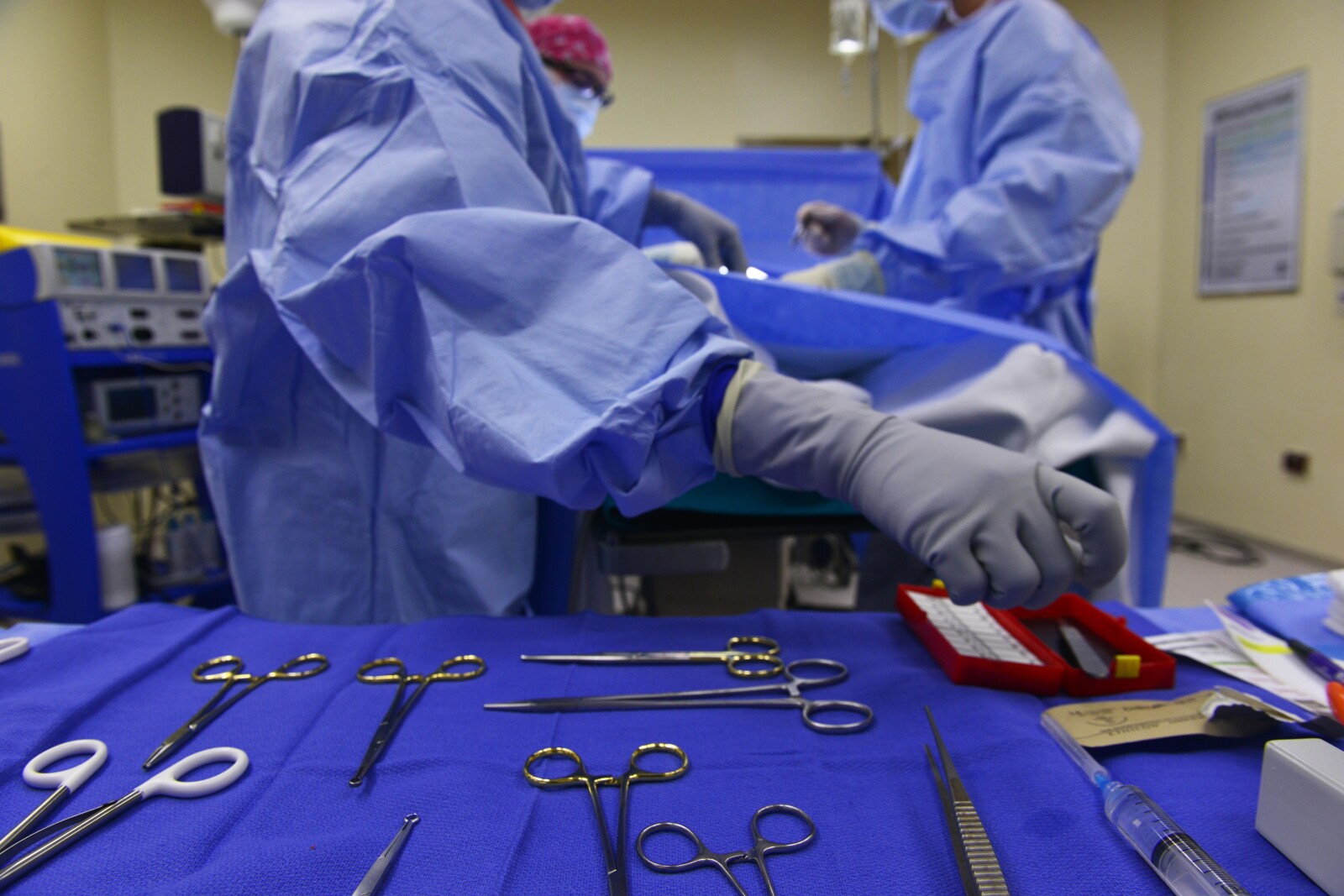Stryker Hip Implant Scandal: Lawsuits Surge
This article examines the intricate details of the Stryker hip implant scandal. It scrutinizes the design defects that initiated substantial recalls, the subsequent lawsuits, and the health complications experienced by patients. Furthermore, it navigates the legal landscape surrounding such cases, emphasizing the necessity of competent legal representation. A comprehensive understanding of this scandal provides valuable insights into the broader context of defective medical device litigation.

Key Takeaways
- Stryker Corporation settled thousands of lawsuits related to their ABG II and Rejuvenate hip implants, paying out $1.43 billion to plaintiffs from 39 states.
- The ABG II and Rejuvenate implants were permanently recalled between 2009 and 2013 due to design defects that caused particle shedding and health issues for patients.
- Stryker has had numerous recalls for various reasons and has been reported to have the most hip device recalls among major manufacturers in the last decade.
- Patients who have received defective hip replacement devices should monitor their symptoms, seek medical attention if necessary, and consult with an attorney to understand their legal rights.
Understanding the Stryker Hip Implant Scandal
The Stryker Hip Implant Scandal represents a significant healthcare controversy, involving design defects in the ABG II and Rejuvenate models that led to particle shedding, thereby causing severe health complications in patients, and subsequently, a surge in lawsuits against the manufacturer. This controversy underscored the potential long-term effects of design defects, which can lead to catastrophic health issues including infection, metallosis, and necrosis. The scandal culminated in a $1.4 billion patient compensation payout, emblematic of the serious implications of medical device failures. The ramifications of this scandal have since prompted increased scrutiny in the medical device industry, and reinforced the necessity for diligent quality control, rigorous testing, and complete transparency to ensure patient safety and trust in healthcare systems.
The Impact of Stryker’s Hip Implant Recalls
Resulting from Stryker's hip implant recalls, a significant shift has been observed in the medical device industry's approach towards quality control, patient safety measures, and transparency in manufacturing processes. Companies are now more focused on rigorous pre-market testing to identify potential long-term effects that could impact patient health. The recalls have also underscored the importance of patient compensation in cases of device failure. In Stryker's case, a $1.43 billion settlement was reached, highlighting the financial implications of inadequate quality control. Health regulators globally are now more vigilant, pushing for stringent regulations to ensure patient safety. Consequently, the industry's commitment to quality and safety is no longer just a moral obligation, but a critical business imperative, shaping future strategies and decisions.
The Role of Design Defects in Stryker Lawsuits
An integral factor contributing to the multitude of lawsuits against Stryker is the design defect inherent in their ABG II and Rejuvenate hip implants. The unique design led to particle shedding, resulting in local tissue damage, inflammation, and increased pain. This defect has resulted in severe long-term effects for patients, including complications requiring revision surgeries and physical therapy. Numerous patients have sought legal recourse, leading to a surge of lawsuits against Stryker. The goal of these suits is patient compensation for medical expenses, pain and suffering, and other damages resulting from the defective hip implants. The widespread litigation emphasizes the need for rigorous product testing and patient safety considerations in medical device design and manufacturing. As the cases progress, the impact on patient compensation and manufacturer accountability continues to unfold.
Other Companies Facing Hip Implant Lawsuits
Not only Stryker, but several other manufacturers such as DePuy Orthopaedics and Zimmer Biomet have also faced a significant number of lawsuits related to defective hip replacement devices. DePuy, a subsidiary of Johnson & Johnson, has seen thousands of claims regarding its ASR hip system, with potential settlements totaling billions. Zimmer Biomet faced legal action due to its M2a Magnum hip system, with patients citing the long term effects of metallosis. These lawsuits underscore the profound impact of device failure on patient health. They also highlight the important role of legal recourse in compensating victims and enforcing accountability among manufacturers. The prevalence of such cases reflects a pressing issue in the orthopedic device industry, demanding rigorous quality control and patient safety measures.
Complications and Health Risks of Defective Hip Implants
Numerous patients experience severe inflammation and pain due to defective hip implants, and these adverse health effects often necessitate additional surgeries, escalating both the physical and financial burden for the affected individuals. Further complications after surgery can include localized tissue damage, caused by particle shedding from the implant, leading to conditions like metallosis. This can be detrimental to the patients' health, resulting in persistent pain and limited mobility. The long term effects can be even more devastating, potentially leading to systemic health issues, including neurological changes, renal impairment or cardiac problems due to metal ion release. It's imperative to monitor these patients meticulously to mitigate these risks. Conclusively, defective hip implants not only affect patients' quality of life but also pose significant health risks, underscoring the need for rigorous quality control in medical device manufacturing.
Legal Aspects: Understanding the Statute of Limitations
Understanding the statute of limitations is crucial for Stryker's hip implant patients, as it determines their legal eligibility to file a lawsuit and seek compensation for their suffering. The time limitations for filing hip implant lawsuits vary by state, but typically range from two to six years from the date of injury or discovery of injury. Filing outside of this timeframe can result in the lawsuit being dismissed, a devastating potential consequence for patients already burdened by pain and medical expenses. Given the complexity of these cases and the critical importance of adhering to the statute of limitations, patients are strongly advised to seek prompt legal advice. A knowledgeable attorney can navigate the legal intricacies, ensuring patients' rights are protected and potential compensation is not forfeited due to a procedural oversight.
The Importance of Seeking Legal Representation
Seeking legal representation is crucial for victims of the Stryker hip implant scandal, as a knowledgeable attorney can provide invaluable guidance through the complex maze of personal injury law. Legal expertise can effectively argue for potential compensation for victims of Stryker hip implants, addressing medical costs, lost wages, pain, and suffering. An attorney can also shed light on the long term effects of defective hip implants, such as metallosis, a condition caused by metal debris released from the hip device, leading to inflammation and tissue damage. These detrimental health implications can significantly impact a victim's quality of life, necessitating additional surgeries and ongoing treatment. Therefore, securing legal representation is an essential step in achieving justice for victims and holding responsible parties accountable.
How to Choose the Right Attorney for Your Case
Evaluating the expertise and experience of a lawyer is paramount, and you should also consider their communication skills, as these factors will greatly influence the success of your case. The attorney selection process can be daunting, but a well-informed approach can alleviate some of the stress. Key factors to consider include the attorney's track record with Stryker hip implant lawsuits, their understanding of medical terminology, and their ability to clearly explain complex legal and medical matters. Furthermore, their negotiation and litigation skills should not be overlooked. It's crucial to choose an attorney who has a thorough understanding of the medical implications of defective hip implants, the ability to effectively communicate these details, and the experience to navigate the legal landscape.
Resources and Support for Victims of Hip Implant Scandals
In the wake of hip implant scandals, individuals affected can access numerous resources for legal and medical support, and they can also join communities of victims to share experiences and advice. These support resources include patient advocacy groups, legal advice forums, and health agencies providing up-to-date information on compensation options and legal proceedings. It's crucial for victims to understand their rights and the legal avenues for seeking compensation. Medical professionals can offer advice on managing physical symptoms and potential treatments. Legal professionals can guide victims through the complex litigation process. Importantly, online communities serve as platforms for sharing personal experiences and advice, fostering a sense of solidarity among those affected. These resources, utilized effectively, can significantly alleviate the burden of dealing with hip implant scandals.
Frequently Asked Questions
What Is the Average Settlement Amount for Stryker Hip Implant Lawsuits?
The average settlement amount for Stryker hip implant lawsuits is not publicly disclosed due to various settlement factors such as extent of injury, lost wages, and medical expenses. However, in 2014, Stryker agreed to a $1.43 billion settlement, averaging about $300,000 per claimant. Legal precedents suggest that these amounts can significantly vary, emphasizing the importance of individual case evaluation in determining potential settlement values.
How Does Stryker’s Hip Implant Recall Compare to Other Major Manufacturers in Terms of Scale and Impact?
The recall implications of Stryker's hip implant scandal have been massive compared to other manufacturers. Stryker's recall of its ABG II and Rejuvenate models caused significant patient harm, leading to a $1.4 billion settlement. This stands as one of the largest in the industry. Other manufacturers have faced similar issues, but the scale and impact of Stryker's recall underscores the importance of manufacturer accountability in the medical device industry.
What Are Some Specific Examples of Health Issues Caused by the Particle Shedding in Stryker’s Implants?
Particle shedding from Stryker's hip implants, as identified through implant material analysis, has been associated with serious health issues. Patients have reported local tissue damage, swelling, and increased pain, leading to a complicated patient rehabilitation process. Some developed metallosis, a condition caused by the release of metal ions in the body, which can lead to necrosis, inflammation, and bone loss. In severe cases, the implant failure necessitated revision surgeries, causing further distress and health risks to patients.
Can Patients Who Have Had Successful Surgeries With Stryker’s Hip Implants Still File a Lawsuit?
Patients with successful surgeries using Stryker's hip implants may not have grounds for lawsuits if they've experienced no surgery complications. However, each case is unique and depends on various factors. Patient rights, including the right to safe and effective medical devices, are paramount in these considerations. Consulting with a legal expert proficient in medical device litigation would provide the best guidance based on individual circumstances and potential latent device defects.
Besides Personal Injury Law, What Other Legal Areas Might Be Relevant in a Lawsuit Against Stryker or Other Hip Implant Manufacturers?
In cases against Stryker or other hip implant manufacturers, besides personal injury law, relevant legal areas may include product liability laws and medical malpractice implications. Product liability laws pertain to manufacturers' responsibility for defective products, while medical malpractice may arise if health professionals fail to meet standard care levels during implantation. It's imperative to scrutinize these areas meticulously, as they can significantly impact the litigation strategy and potential compensation.
Conclusion
The Stryker hip implant scandal underscores the potential risks associated with medical devices. It serves as a reminder of the crucial role of rigorous product testing and patient safety in healthcare. The lawsuits highlight the legal complexities in defective product suits and the importance of professional legal representation. This case study is instrumental for potential plaintiffs, legal practitioners, and medical device manufacturers, offering valuable lessons on accountability, patient care, and legal responsibility in the healthcare industry.

This post has been generated by AI and was not reviewed by editors. This is Not legal advice. Please consult with an attorney.




